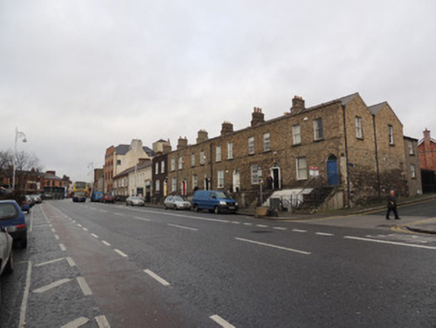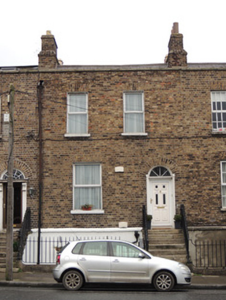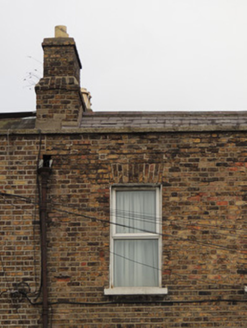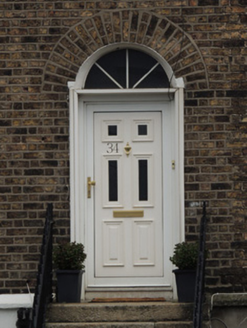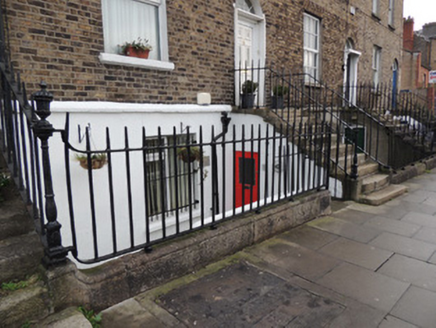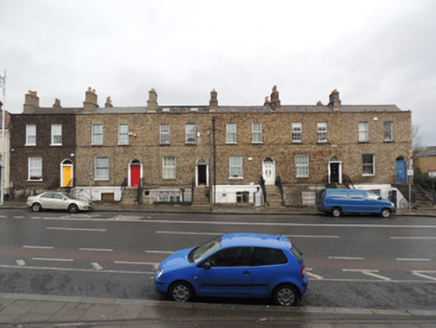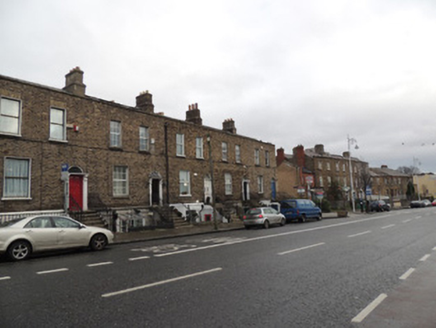Survey Data
Reg No
50070082
Rating
Regional
Categories of Special Interest
Architectural
Original Use
House
In Use As
House
Date
1800 - 1840
Coordinates
314271, 235003
Date Recorded
02/01/2013
Date Updated
--/--/--
Description
Terraced two-bay two-storey over raised basement house, built c.1820, now also in use as office. M-profile pitched slate roof, with yellow brick chimneystacks on party walls. Cast-iron rainwater goods, parapet with granite coping. Yellow brick walls laid in Flemish bond to front (south-west) and rear elevations, with granite coping to parapet, painted plinth course and rendered walls to basement. Square-headed window openings, having yellow brick voussoirs, rendered reveals and cut granite sills. Round-headed stair window to rear elevation, having one-over-one pane timber sash window with spoked fanlight. Replacement uPVC windows to other openings. Round-headed door opening with brick voussoirs, replacement uPVC door and fanlight. Granite platform and steps, flanked by wrought-iron railings. Square-headed door opening with recent door to basement area, approached by recent staircase. Carved granite plinth wall with wrought-iron railings enclosing basement area.
Appraisal
This well-composed house maintains the parapet height and fenestration arrangement of its neighbouring buildings, contributing positively to the horizontal aspect of the streetscape. The terrace of six has a pleasing effect, the diminishing windows and symmetrical fenestration to the upper floors create a well-proportioned typically Georgian façade. Although the original windows and doorcase have been lost, it retains much of its early form and character. Thom’s directory of 1850 lists no.34 as no.36, as being the residence of Alexander Colville, engineer, while the Dublin Street Directory of 1862 lists no.38 as the residence of Mr. Robert Little. The terrace was renumbered by the time of Griffith’s Valuation map c.1880.
